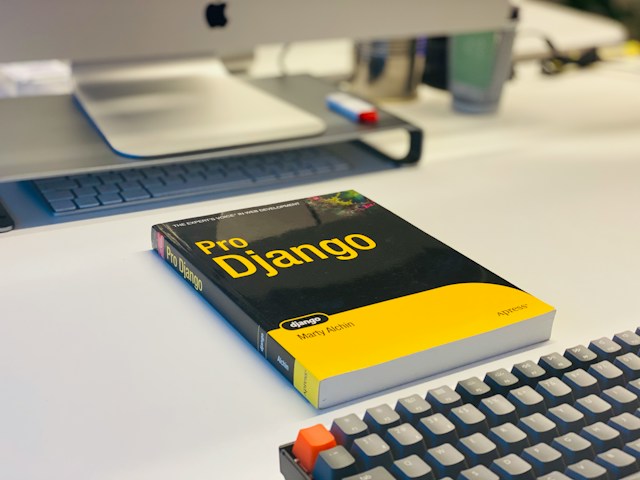The Roadmap to CI/CD for Django: Embracing Iterative Progress
By Alex Stelmakh -
The world of development today is dynamic, with many moving pieces that must seamlessly integrate to produce a successful application. One of the most critical integrations in today's development environment is Continuous Integration and Continuous Deployment (CI/CD).
Today developers rely heavily on automation, containerization, and cloud technologies to deliver applications quickly and efficiently. Continuous Integration and Continuous Deployment (CI/CD) play a pivotal role in this ecosystem. For those coming from a Django background or those looking to set up CI/CD for Django projects, the following guide elucidates how to navigate this setup, even if you're relatively new to these concepts.
It's A Journey, Not a Sprint:
The CI/CD pipeline might initially seem overwhelming, laden with tools and best practices. However, one must remember that establishing a robust process is more of a marathon than a sprint. Herein lies the power of adopting an iterative approach.
Iterative Approach: Instead of trying to get everything perfect in one go, the key is to break the process into smaller chunks. Start small and iterate. Begin by Dockerizing your application. Once you're comfortable, transition into setting up a basic CI/CD pipeline. From there, slowly expand into cloud deployment. Every phase will offer its own set of learnings, and taking it one step at a time ensures you grasp each segment's nuances. Iterative Benefits: This modular approach not only allows for easier troubleshooting but also provides a clear sense of progression. As you successfully implement each stage, the motivation and confidence to tackle the next segment grow manifold.
-
Version Control with Git:
Importance: Before embarking on the CI/CD journey, it's essential to have a version control system. It tracks changes, allows multiple developers to work simultaneously, and provides a foundation for CI/CD. Tools: GitHub, GitLab, and Bitbucket stand out as the leading platforms and often offer integrations with CI/CD tools, streamlining the setup process.
-
Continuous Integration (CI):
What is it? CI promotes merging all developers' working copies to a shared mainline several times a day, underlining automated testing to catch bugs early. Tools: Services like GitHub Actions, GitLab CI/CD, Travis CI, CircleCI, or Jenkins are revered for their reliability and extensive features. Steps: A typical CI process involves pulling the latest code, setting up the required Python environment, installing dependencies using pip, running the Django test suite, and optionally conducting static code analyses.
-
Continuous Deployment (CD):
What is it? CD is the automation of application deployment, ensuring that you can release new features swiftly and reliably. Deployment Targets: Platforms such as Heroku, AWS Elastic Beanstalk, Google Cloud Run, and VPS providers like DigitalOcean and Linode are common targets. Each comes with its perks and considerations.
-
Database Migrations:
Overview: Changing your database structure is often needed. Django’s migration system allows for schema alterations without data loss. Tools and Tips: Regular backups can't be emphasized enough. Tools like django-dbbackup can automate this task. Always test migrations in a staging environment before a production push.
-
Environment Variables:
Need: These are essential for managing settings, ensuring flexibility across various stages like development, staging, and production. Security: Storing sensitive data, like secret keys and database URLs, using environment variables ensures better security and prevents hardcoding.
-
Docker:
Consistency: Docker offers a consistent environment from development to production, reducing the infamous “works on my machine” syndrome. Implementation: By defining a Dockerfile, you can specify your Django project's environment. Docker Compose, while optional, can elegantly handle multi-container applications for local development.
-
Monitoring and Logging:
Insights: Post-deployment, it's crucial to keep a watchful eye on applications. Monitoring provides a real-time glimpse into the app's health, while logging captures events for later analysis. Tools: Sentry stands out for error tracking, alerting developers of issues in real-time. Log aggregators and processors can offer comprehensive insights into application behavior and performance.
-
Rollbacks:
Safety Net: Even with rigorous testing, issues can surface post-deployment. Having a rollback strategy ensures service continuity. Methods: Strategies might include reverting Git commits, rolling back database migrations, or switching to a previous Docker image.
Iterative Deployment Journey:
Venturing into CI/CD can be intimidating. The trick is in breaking the journey into manageable steps:
Start with Basics: Begin with Docker, familiarize yourself with containerization, then ease into CI by automating builds and tests. As your comfort grows, venture into CD. Evolution over Revolution: CI/CD is not a one-size-fits-all. Your pipeline will evolve based on project needs, team feedback, and learnings from any hiccups along the way.
Caveats and Recommendations:
Learning: Understand the learning curves. While each tool is user-friendly, mastering them requires time and practice. Simplification: Start simple. As your understanding deepens, expand your CI/CD pipeline by incorporating more features. Costs: Especially with cloud services, keep an eye on expenses. Budget-friendly options exist, but unchecked resource usage can rack up bills. Community: Leverage the wealth of online resources, from official documentation to community forums. Engaging with communities, like Stack Overflow, can expedite problem-solving. Continuous Improvement: Always iterate and optimize. As technologies evolve, so should your pipeline. Regular reviews can help identify enhancement areas.


